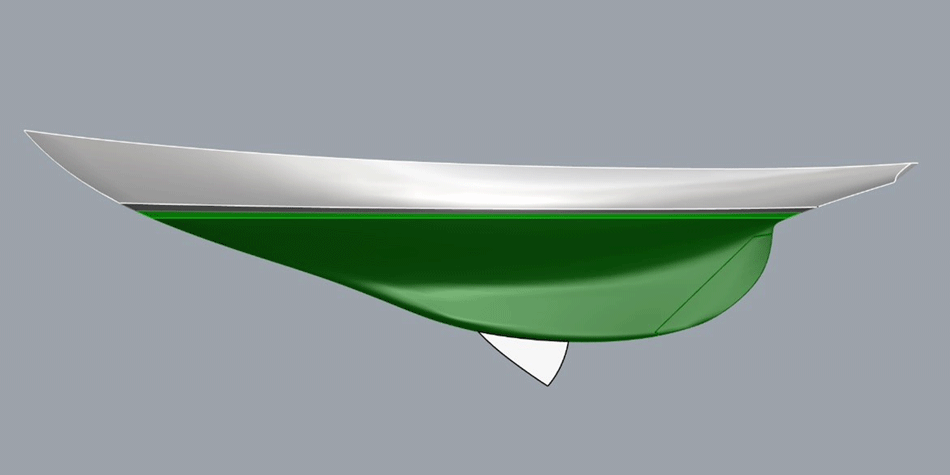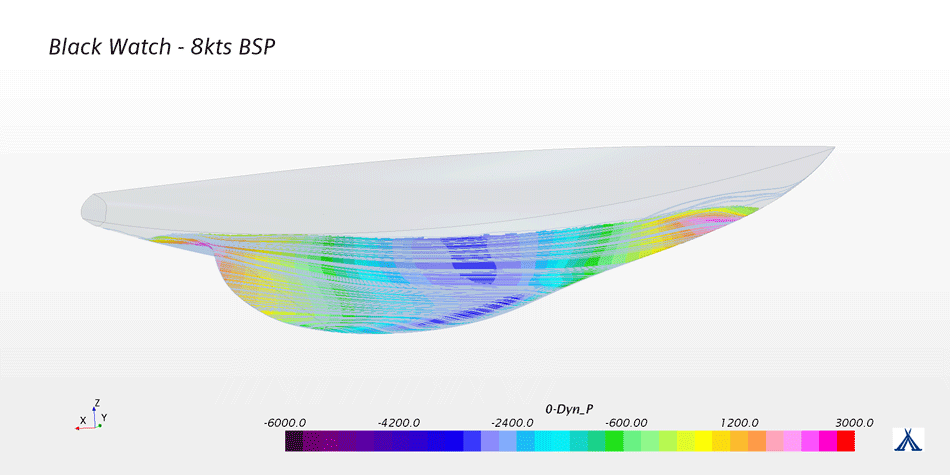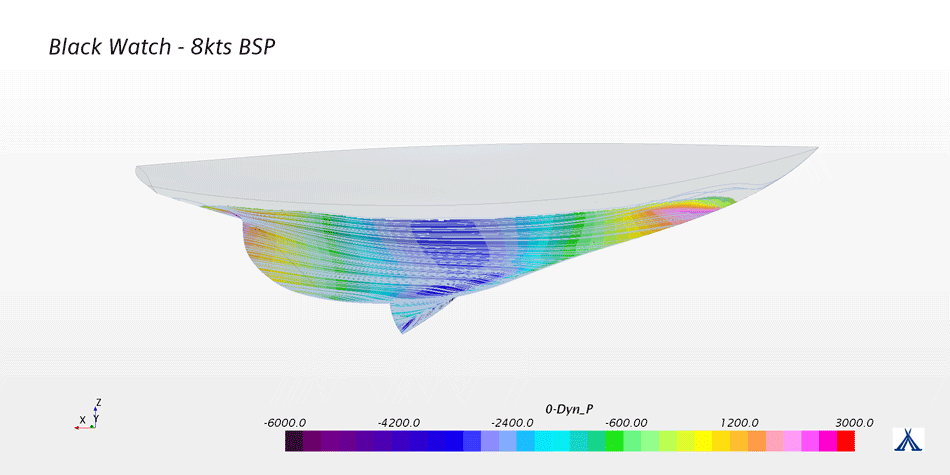In naval architecture, intuition is tricky. Unless you’ve spent time digging into an issue, don’t take anything for granted! We were recently reminded of that after studying the effectiveness of the centerboard on the classic Olin Stephens design, Black Watch.
After several seasons of getting hit with what felt like a very tough rating in the Classic rule – and deciding to forgo the board completely under that rating system – we decided to take a more scientific look at the centerboard. The question was: How much more effective is the hull at creating lift when we lower the centerboard?
By leveraging a 3D model used for another study, we came up with some clues—which surprised us all.

A little more context:
- The board is relatively small: it adds only about 4.5% to the hull’s plan form area.
- The change in draft is more substantial– approximately 40 inches, a 36% increase.
Naval architects know that deeper is always better for performance. But how many would estimate what the data revealed: an increase in total lift on the order of 65-75% for the same speed, heel, and leeway angle? We know we didn’t. Measured another way, the effectiveness of the hull to create lift (measured by dividing the lift by the drag) increased by about 50%.
How do we explain such a large increase? In technical terms, the answer has to do with aspect ratio – i.e., the shape of the lifting surface. The longer and skinnier the shape, the more efficient it is a creating lift.
A more intuitive answer can be found in the data. Although the centerboard itself generates a substantial amount of new lift, the largest increase comes from the difference in pressure distribution on the hull itself. In even simpler terms, the presence of the board changes the flow on the hull, which makes the hull more effective at creating lift.
The following two images show the pressure distribution on the hull. Note the substantially larger area in dark blue when the centerboard is down.


So, does this mean that Black Watch will sail upwind 50% faster and that her rating penalty is warranted? We would argue no, because:
- Increased lift will indeed mean better performance upwind and will result in a reduced leeway angle. This will certainly help VMG, but by how much? The more efficient hull means less leeway but implies a smaller apparent wind angle (less driving force), a lower center of effort on the hull (more heeling moment), and more drag.
- The ORR VPP calculates the board will add between 0.1 to 0.15 knots to VMG. We think the increase may be slightly larger and look forward to collecting some data in the coming seasons to help us quantify the increase in upwind performance.
- Even this small increase in performance is only relevant when going upwind. At all other points of sail, lift is less important, so there is no point in carrying the extra drag generated by the board.
Our intuition told us that Black Watch’s board would have an impact on performance—but we never expected such a large increase in the hull’s ability to generate lift. Ultimately, data collected on the water will tell us just how much the board helps upwind performance.

